Gloster Meteor N.F.11 and N.F.14
Here are the Classic Airframes Gloster Meteor N.F.11, limited-run injection-molded kit, and the Aeroclub Meteor N.F.14, multi-media vacuform. Both 1/48, the N.F.11 built in 2004 and the N.F.14 in 2002.
Following the conclusion of the Second World War, the RAF's night and all-weather fighter squadrons were equipped with the latest versions of the excellent Mosquito night fighter, which had demonstrated its ability to deal effectively with piston-engine bombers. However, within a few years there was a proliferation of prototypes for jet-powered bombers with performance well in advance of anything used in the war already flying, and it was obvious that the Mosquitos would soon be outperformed by their opponents.
The Air Ministry had already issued Specification F.44/46, calling for a two-sat, twin-jet powered, all-weather fighters. None of the original submissions met the Air Ministry's requirements. Eventually, DeHavilland would develop the D.H.110 that became the Sea Vixen, and Gloster would develop the Javelin, but these aircraft were ten years in the future and there was a need for something immediately to fill the gap. Developments of existing jet aircraft were considered. The trainer versions of the de Havilland Vampire and Venom would be developed into night fighters, as would the trainer version of the Gloster Meteor. The Meteor night fighter was in fact the most important British night and all-weather fighter of the 1950s in terms of numbers produced and operated.
Armstrong Whitworth, which was involved in the production of the Meteor, was entrusted with the development of a night fighter based on the Meteor airframe to specification F.42/48. Tests had already been made with F.3 and F.4 Meteors equipped with radar, which showed the Meteor could be adapted for night fighting.
The aerodynamic configuration of what was designated the Meteor M.F.11 was built onto and flight tested on the fourth production T.7 trainer in September 1949. The first true prototype, WA546, made its first flight on May 31, 1950. The night fighter differed from the T.7 by the use of the original-span wings of the F.1 and F.3, an extended nose for the radar, and an F.8 rear fuselage with a five-foot extension in overall fuselage length. The night fighter used only the two-seat cockpit and forward fuselage of the trainer. The standard armament of four 20mm cannon were removed from the fuselage and located in the wings immediately outboard of the engines.
Production delivery of the N.F.11 began in October 1950 with the first airplane being delivered to 29 Squadron in early 1951. After production of 338 N.F.11s, the last one left the factory in May, 1954. Fourteen RAF squadrons and two OCUs operated the fighter, with the type remaining operational until the early 1960s, while several were delivered to the French, Belgian and Danish air forces. 40 very-similar tropicalized N.F.13s were produced, and these were the only Meteors in the RAF to come close to firing their guns in anger when they were used for the defense of Cyprus during the 1956 Suez intervention in the expectation the Egyptians might attack the island with their new Il-28 jet bombers.
The only combat use of the Meteor night fighter came when the Israelis used one to intercept and shoot down an Il-14 transport flying from Damascus to Cairo in 1956 that it was believed the commander of the Egyptian Air Force was aboard (he wasn't) just at the outbreak of the 1956 war.
The decision to use American radar led to the development of the last two Meteor night fighters, the N.F.12 and N.F.13, which utilized the U.S. APS-21 radar. Both versions were 17 inches longer than the N.F.11 (some sources have stated the N.F.14 was 17 inches longer than the 12, but John Adams of Aeroclub ended the argument by going out and physically measuring one of each when he created his vacuform kits). The N.F.14 finally got rid of the heavily-framed T.7 canopy with its restrictive vision, using a blown clear bubble canopy. 100 N.F.14s began to appear in 1954, initially equipping 25 Squadron. By 1956 they were being replaced by the early marks of Javelin, but the N.F.14 survived in overseas deployment, with 60 Squadron at Tengah, Singapore, not trading theirs for Javelin FAW.9s until 1961.
This N.F.11 is the Classic Airframes kit. As with all Classic Airframes Meteors, fit is problematic, and one can expect to use lots of putty. I finally figured out if I assembled the CA Meteor kits with the lower wing center section attached to the fuselage, then attaching the upper wing half, followed by the outer lower wing part, I could get things to fit with a minimum of gaps and filler needed for the joints. The kit decals were used for the national insignia, with serials and squadron insignia from the Xtradecal sheet for the Meteor T.7 and N.F.11/13, to do an airplane operated by 87 Squadron in Germany in 1957.
The Aeroclub N.F.14 is actually a more buildable kit than the Classic Airframes kits. Once the parts are off their backing, they fit much better than the CA kits, though still needing putty on the joints. The white metal cockpit detail parts and white metal landing gear meant I only had to put a single medium-sized fishweight in the extreme nose to get a nose-sitter. Kit decals were used, to do one of the last N.F.14s of 60 Squadron at Singapore in 1960.

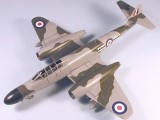
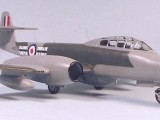
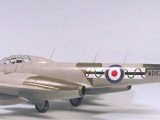
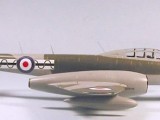
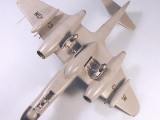
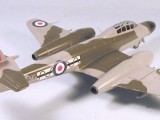
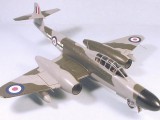

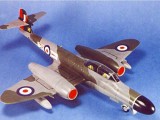
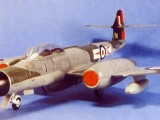

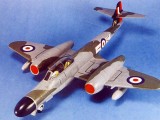
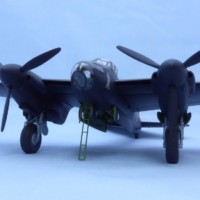
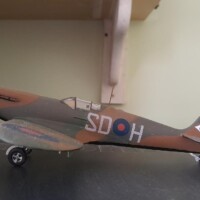
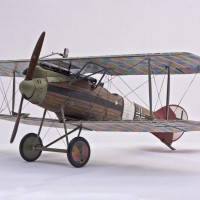
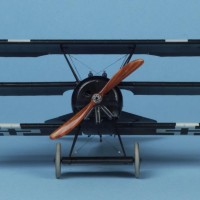
Nice looking builds Tom.
Good work, Tom.
Just noticed this is your 250th posting/article, and you never disappoint.
Thanks!
very nice,
did you use photoshop on pictures to look old?,
that old camera, grainy look, very cool - too bad you didnt made diorama for it, in 1950 style
Nope - they're old.
Nice to see them side by side! They look great.
Tom, two nice jobs on a very unique looking aircraft. I love the classic RAF jets. Thanks!
Nice clean builds, killer paint jobs!